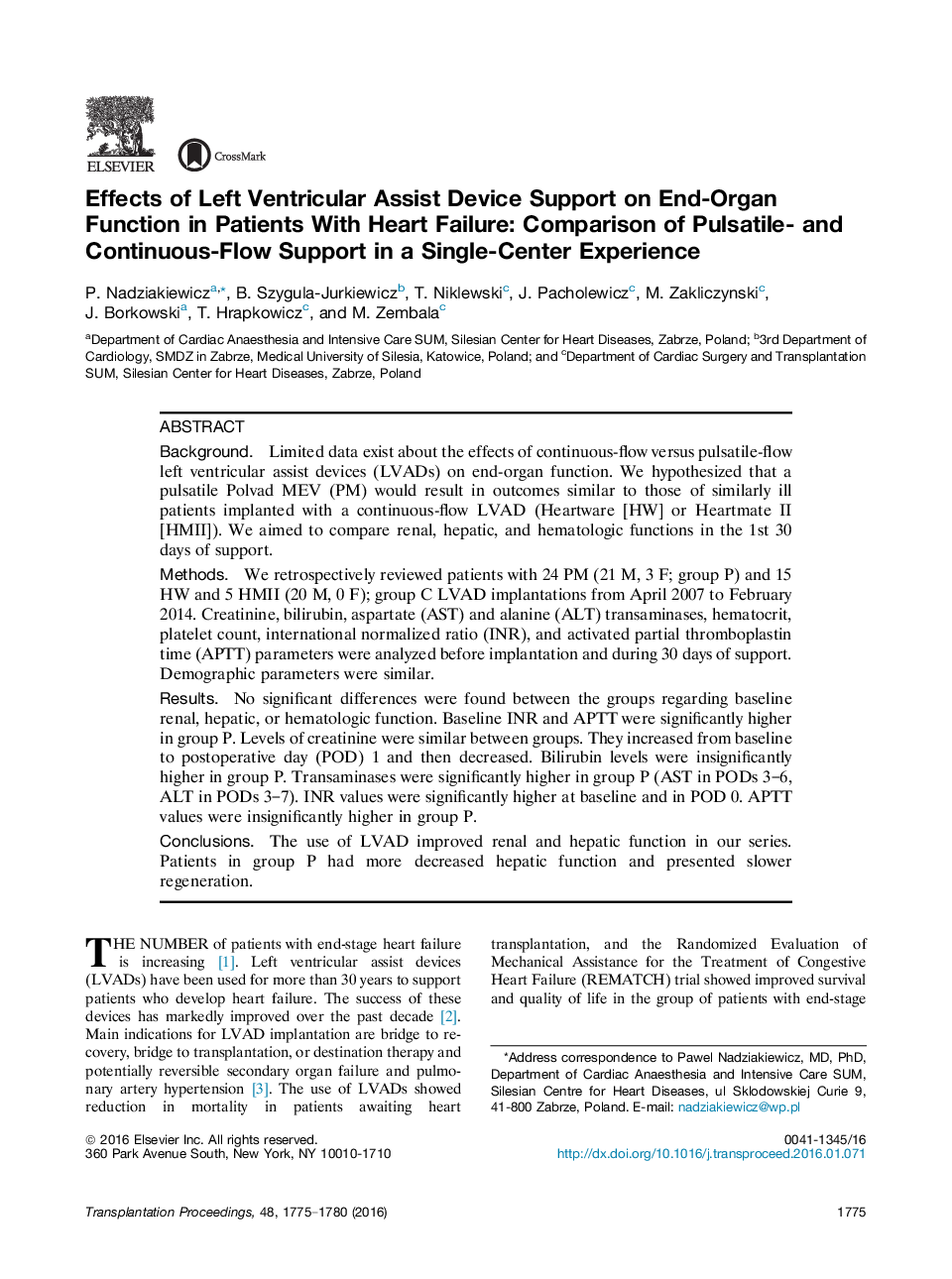| کد مقاله | کد نشریه | سال انتشار | مقاله انگلیسی | نسخه تمام متن |
|---|---|---|---|---|
| 4256117 | 1284510 | 2016 | 6 صفحه PDF | دانلود رایگان |
• Implantation of left ventricular assist devices (LVADs) is one of the methods of therapy in patients with end-stage heart failure. Some degree of end-organ dysfunction is common in this group of patients.
• End-organ regeneration is possible after restoration of proper circulation.
• Continuous or pulsatile flow characteristics of LVADs may play a role in that process.
• We evaluated the effects of continuous-flow Heartware and Heartmate II and pulsatile Polvad MEV LVADs on end-organ function during the 30 days after implantation.
BackgroundLimited data exist about the effects of continuous-flow versus pulsatile-flow left ventricular assist devices (LVADs) on end-organ function. We hypothesized that a pulsatile Polvad MEV (PM) would result in outcomes similar to those of similarly ill patients implanted with a continuous-flow LVAD (Heartware [HW] or Heartmate II [HMII]). We aimed to compare renal, hepatic, and hematologic functions in the 1st 30 days of support.MethodsWe retrospectively reviewed patients with 24 PM (21 M, 3 F; group P) and 15 HW and 5 HMII (20 M, 0 F); group C LVAD implantations from April 2007 to February 2014. Creatinine, bilirubin, aspartate (AST) and alanine (ALT) transaminases, hematocrit, platelet count, international normalized ratio (INR), and activated partial thromboplastin time (APTT) parameters were analyzed before implantation and during 30 days of support. Demographic parameters were similar.ResultsNo significant differences were found between the groups regarding baseline renal, hepatic, or hematologic function. Baseline INR and APTT were significantly higher in group P. Levels of creatinine were similar between groups. They increased from baseline to postoperative day (POD) 1 and then decreased. Bilirubin levels were insignificantly higher in group P. Transaminases were significantly higher in group P (AST in PODs 3–6, ALT in PODs 3–7). INR values were significantly higher at baseline and in POD 0. APTT values were insignificantly higher in group P.ConclusionsThe use of LVAD improved renal and hepatic function in our series. Patients in group P had more decreased hepatic function and presented slower regeneration.
Journal: Transplantation Proceedings - Volume 48, Issue 5, June 2016, Pages 1775–1780
